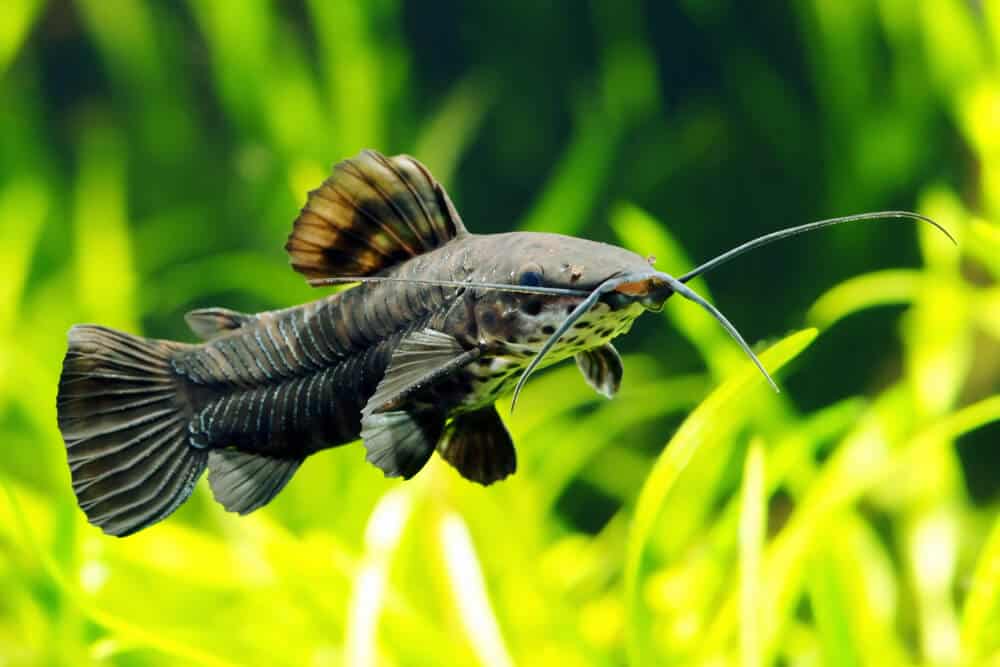What Are Some Interesting Facts About Molly Fish?
Molly fish, also known as Poecilia sphenops, are fascinating creatures that have captivated fish enthusiasts for years. These small freshwater fish are known for their vibrant colors, which range from fiery reds to striking blues. With their peaceful nature and easy-to-care-for qualities, it’s no wonder why Molly fish have become a popular choice for both beginner and experienced fish keepers alike. Whether it’s their ability to adapt to various water conditions or their unique reproductive habits, there is no shortage of interesting facts to discover about these delightful aquatic pets. So, let’s dive into the world of Molly fish and uncover some intriguing tidbits about them!
Body Structure
Molly fish are small, freshwater fish with a slender body and a rounded belly. They typically grow to be about 2 to 4 inches long, making them relatively small in size compared to other aquarium fish. Their bodies are covered in smooth scales, and they have a unique dorsal fin that can be tall and sail-like in some varieties. Molly fish also have a prominent anal fin and a tail fin that is typically fan-shaped. Overall, their body structure is well-adapted for swimming and maneuvering in the water.
Life Span
On average, the lifespan of a Molly fish is around 2 to 5 years. However, with proper care and a suitable living environment, they can sometimes live up to 7 years or even longer. Factors such as genetics, diet, water quality, and overall health can affect the lifespan of Molly fish.
Diet
Molly fish have herbivorous tendencies, meaning they primarily eat plants and algae. However, they are also known to consume small insects and other invertebrates if available. In an aquarium setting, their diet should consist of a variety of foods to ensure proper nutrition. They can be fed a combination of high-quality flake or pellet food, blanched vegetables like spinach and zucchini, and occasional live or frozen foods such as brine shrimp or bloodworms.
Reproduction
Molly fish are livebearers, which means that they give birth to live young instead of laying eggs. Female Molly fish can store sperm from a single mating and fertilize multiple batches of eggs over a period of time. The gestation period for Molly fish is typically around 4 weeks, after which the female releases a cluster of fry (baby fish). It’s important to provide ample hiding places and plants in the aquarium to protect the fry from being eaten by adult fish.
Color Varieties
Molly fish come in a wide range of colors and patterns, thanks to years of selective breeding. Some of the common colors include black, silver, gold, orange, and white. There are also various pattern variations, including marbled, dalmatian, and tuxedo. Selective breeding has allowed fishkeepers to create new and unique color strains, making Molly fish a popular choice for those who appreciate the beauty and diversity of aquarium fish.
Behavior
Molly fish are generally peaceful and social creatures that can coexist well with other community fish. They have a relatively calm and friendly demeanor, making them suitable for a community aquarium. Molly fish are known to be active swimmers and enjoy exploring their environment. It is recommended to keep them in groups of at least three individuals to promote social interaction and reduce stress.
Habitat
Molly fish are native to various regions in North and Central America, including Mexico and the southern parts of the United States. They prefer slow-moving or still waters like rivers, ponds, and marshes. In an aquarium setting, it is important to replicate their natural habitat as closely as possible. This can be achieved by providing a well-filtered aquarium with plenty of plants, rocks, and hiding spots. They also appreciate a slightly brackish environment with a higher salt content than most freshwater fish.
Health Considerations
Like any living creature, Molly fish are susceptible to certain diseases and health issues. Some common diseases that can affect them include fin rot, ich (white spot disease), and velvet disease. It is important to regularly monitor the water parameters, maintain good water quality, and quarantine new fish before introducing them to an existing aquarium. Providing a balanced diet, regular water changes, and a stress-free environment can greatly contribute to the overall health and well-being of Molly fish.
Interaction with Humans
Molly fish are one of the most popular fish in the aquarium hobby due to their vibrant colors, ease of care, and peaceful nature. They are often featured in community tanks, where they coexist harmoniously with other fish species. Additionally, Molly fish are also valued for their educational value. They are commonly used in schools, classrooms, and science projects to teach children about the basics of fishkeeping and aquatic ecosystems.
Conservation Status
As aquarium fish, Molly fish are bred in captivity and readily available in the pet trade. However, their wild counterparts face certain threats in their native habitats. Loss of habitat due to urbanization, pollution, and invasive species pose significant challenges to their survival. Efforts for the conservation of Molly fish focus on protecting their natural environments, promoting responsible fishkeeping practices, and raising awareness about the importance of preserving biodiversity in freshwater ecosystems.
In conclusion, Molly fish are fascinating creatures with their unique body structure, herbivorous tendencies, and vibrant color varieties. They have a relatively short lifespan but can thrive with proper care and attention. Molly fish are known for their peaceful nature and social interaction, making them a popular choice for community aquariums. By understanding their natural habitat, providing a suitable environment, and taking preventive measures, we can ensure the health and well-being of these beloved fish. So whether you’re a seasoned fishkeeper or a beginner, Molly fish can be a delightful addition to any aquarium, bringing joy and educational value to your aquatic world.




